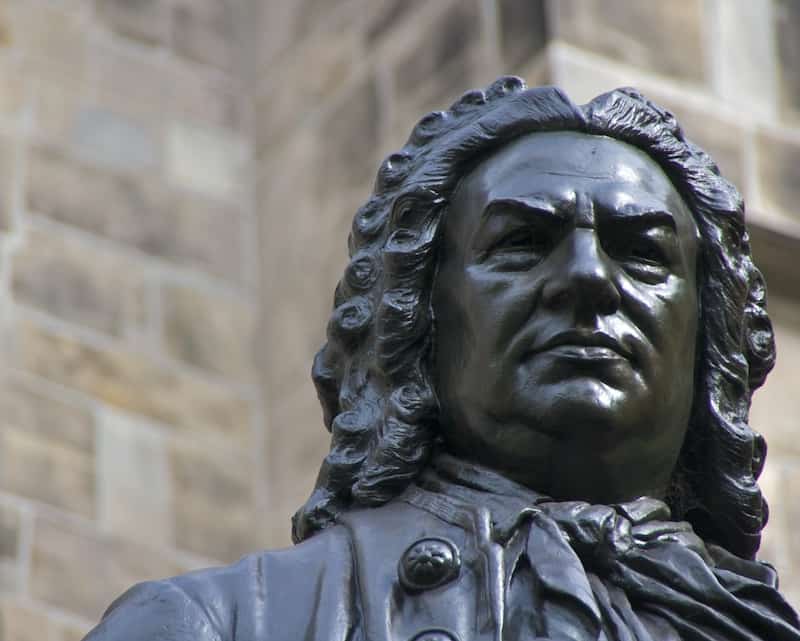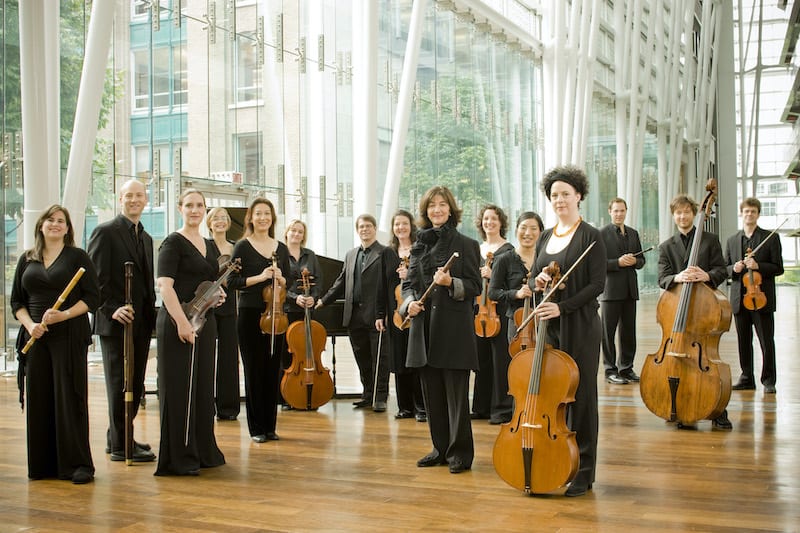The Baroque music era was a period of music where major developments laid the groundwork for the classical music of the next few centuries. The orchestra was born, as were important new musical forms, such as opera and the concerto. The harmonic system that would dominate Western music throughout the following Classical and Romantic periods was established, and many pieces were written which remain popular today.
In this post will take a closer look at the music of the Baroque period. We’ll investigate its history, some of the theoretical and stylistic developments of the time, and the key Baroque composers. We hope that it’ll leave you with a new-found appreciation and understanding of the rich, complex, and beautiful music of this fascinating period.
When was the Baroque Era?
The Baroque period lasted a century and a half, from approximately 1600-1750 AD.
It followed on from the Renaissance period making it the third of the six major eras of Western classical music which were.
- The Medieval era (500-1400AD)
- The Renaissance era (1400-1600AD)
- The Baroque era (1600-1750AD)
- The Classical era (1730-1820AD)
- The Romantic era (1800-1910AD)
- The Contemporary era (1900-Present)
Style of Baroque
The term “Baroque” comes from the Portuguese word barroco, which means “oddly shaped pearl”.
Whilst this might seem like a strange description for a period of music, it refers to the ornate, decorated nature of the art that came out of the era.
That said, one has to be careful when making generalizations about Baroque music, as the term covers an incredibly diverse array of styles, particularly as national musical identities became more pronounced.
In general, music became more grand, dramatic, and full of greater contrasts (in terms of dynamics and texture), and melodies were often decorated with music ornaments such as trills and turns.
Similarly, the visual art and architecture of the period were elaborate and decadent.
Music also became more overtly emotive, and where a piece had lyrics composers would try to link the meaning of the text to the content of the music.
Pieces tend to have one clear emotion present throughout, which is in contrast to later music.
For example, a single movement of a piece in the Romantic period might suggest a wide range of emotions in quick succession.
Polyphonic composition had dominated the end of the Renaissance period, where multiple complex melodies weave in and out of each other to impressive effect.
Known as stile antico, this continued into the Baroque era, but tended to be used only in religious settings.
Meanwhile, secular music started to employ the simpler Italian-developed stile moderno, which utilized expressive harmony and emphasized the solo voice and a clear separation between the melody and the bass line.
Instrumental music grew in popularity, significance and complexity.
Previously it had often existed to accompany dancing or for use in religious settings, but it was now art to be listened to for its own sake.
Dance suites were a popular instrumental form: they were inspired by real dances but were actually just meant for listening.
New Musical Forms
Many of the musical forms and structures established during the Baroque era would become mainstays of classical music over the following centuries.
The three main ones to be developed were Opera, the Concerto, and Sonatas which became hugely popular.
The Birth of Opera
Opera – a theatrical combination of vocal music, acting, costume design, scenery, and sometimes dance – originated in Italy at the very end of the Renaissance period, as a group of artists called the Florentine Camarata sought to revive the ideals and musical drama of Ancient Greece.
In 1607 Italian Baroque composer Claudio Monteverdi wrote L’Orfeo, which is based on the Greek legend of Orpheus, and is the earliest surviving opera that is still regularly performed.
Opera singers were highly-trained virtuosi, and heroic roles were often written for high-pitched male castrati.
Here is an extract from L’Orfeo:
Concertos
The instrumental concerto was also developed in the Baroque era.
Featuring a soloist accompanied by a large ensemble, concertos gave star players the chance to showcase their ability in a way that hadn’t been seen previously.
They are typically formed of three movements, with a slow one bookended by two faster movements.
Antonio Vivaldi wrote hundreds of violin concertos, while J.S. Bach’s famous Brandenburg Concertos are an example of concerti grossi, in that they feature a group of soloists, who share the primary melodic material between them, accompanied by a larger ensemble:
Other New Forms
Other new musical forms that developed during the Baroque period include:
- Oratorio – a large-scale composition for orchestra, soloists and choir
- Sonata – a small-group or solo instrumental work made up of multiple movements
- Cantata – a multi-movement vocal piece that utilises ensembles of various sizes and often includes a choir
- Suite – a series of dance pieces in the same key
Harmony in The Baroque Era
In the Medieval period and for much of the Renaissance period music was based on scales or modes.
The Baroque period completely abandoned that approach in favor of the establishment of “common practice harmony”, where each tone in the diatonic scale functions according to its relationship with the tonic (or root note, the first degree of the scale).
This meant that pieces were in established key centers, and used standard chord progressions, such as perfect (V-I) cadences.
This functional tonal system would remain prevalent through the Classical and Romantic periods and is still commonly used today, for example in much modern popular music.
Notation and Theory: Figured Bass and Basso Continuo
Figured bass was a new development in notation, and functioned a little bit like the kind of chord symbols we would later see used in jazz and popular music.
A keyboard player (typically a harpsichordist or organist) would be given a bassline, written using traditional notation, with little numbers placed above the stave.
These digits would refer to the intervals that were to be played above each bass note, thus implying chords, with which the keyboardist would improvise an accompaniment.
Basso continuo is a system in which a chordal instrument and one or more bass-register instruments (such as cello or bassoon) play a partially improvised accompaniment together using figured bass notation.
In general, during the Baroque period, professional musicians were expected to be accomplished improvisers as both soloists and accompanists, and it was only later that improvisation largely disappeared from classical performance.
Important Baroque Era Composers

Italian composers were at the forefront of many of the major developments in the Baroque era, embracing musical changes before their contemporaries in other countries, although later hugely important composers emerged from Germany, France, and England.
Virtually all composers earned a living through the patronage of religious or political institutions.
Baroque music remains popular today and continues to be performed and recorded often.
Major composers include:
- Johann Sebastian Bach (1685-1750) – one of the greatest composers of all time: the German wrote extremely important keyboard music, concertos, dance suites and sacred vocal music, such as the St. Matthew Passion.
- Geroge Friedrich Handel (1685-1759) – German composer who spent most of his career in London writing operas, concerti grossi and more. The oratorio Messiah remains incredibly popular. His music influenced Classical composers like Mozart and Beethoven.
- Domenico Scarlatti (1685-1757) – an Italian who is best known for his 555 keyboard sonatas.
- Antonio Vivaldi (1678-1741) – composer, virtuoso violinist, educator and Roman Catholic priest.
- Henry Purcell (1659-1695) – one of the greatest English composers. His chamber opera Dido and Aeneas is one of his most famous works.
Vivaldi’s Four Seasons, a series of violin concertos, is one of the best-loved pieces of the Baroque era:
Instrumentation

Many instruments used during the Baroque period are still used today.
String instruments like violins and cellos were in use, as were woodwind instruments such as recorders, flutes, oboes, and bassoons.
At this stage brass instruments still did not have valves.
String instruments used new techniques like tremolo (a sort of wobbling effect) and pizzicato (the plucking of the strings).
Composers began to experiment with larger ensembles with multiple players on each part to gain a fuller sound, thus essentially birthing the orchestra.
The Baroque orchestra was smaller than the modern one and would sometimes be directed from the harpsichord.
At the other end of the ensemble spectrum, solo keyboard works were also highly popular, and ornate contrapuntal (another word for polyphonic) harpsichord (the precursor to the piano) music is a classic sound of the Baroque period.
Summary
So, that concludes our guide to the Baroque period.
We’ve learned about the birth of opera, the concerto, and various other forms, as well as the establishment of the harmonic system that would dominate Western music for centuries.
We’ve also been introduced to some brilliant composers, whose works are still performed extensively today.
We hope that you’ve found our look at this musical period insightful and that you’ve enjoyed listening to some beautiful pieces from this fascinating era.
